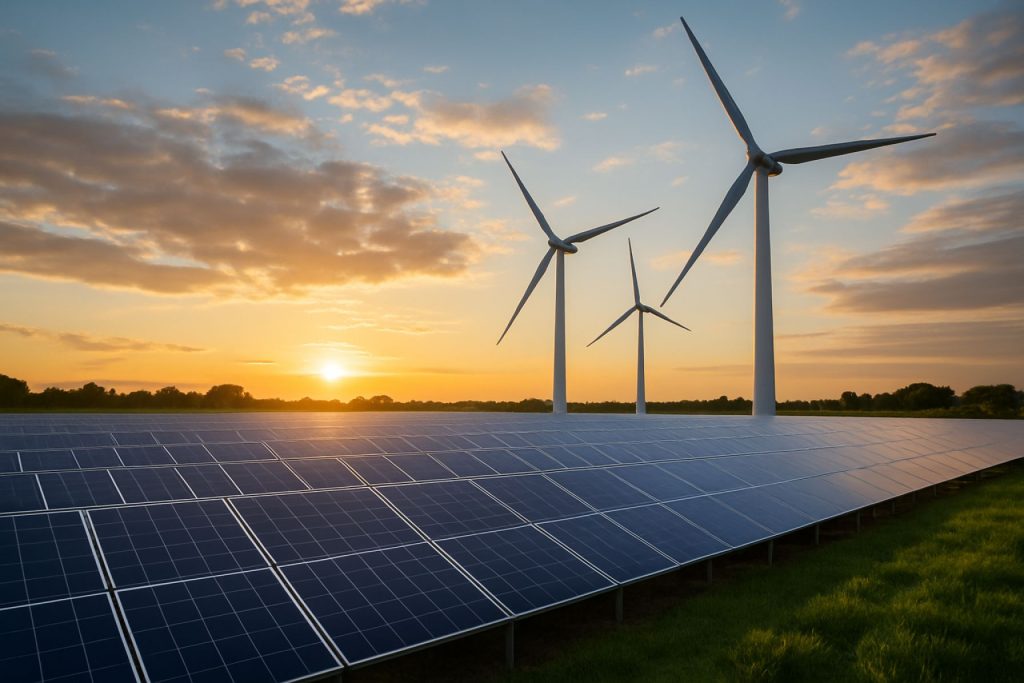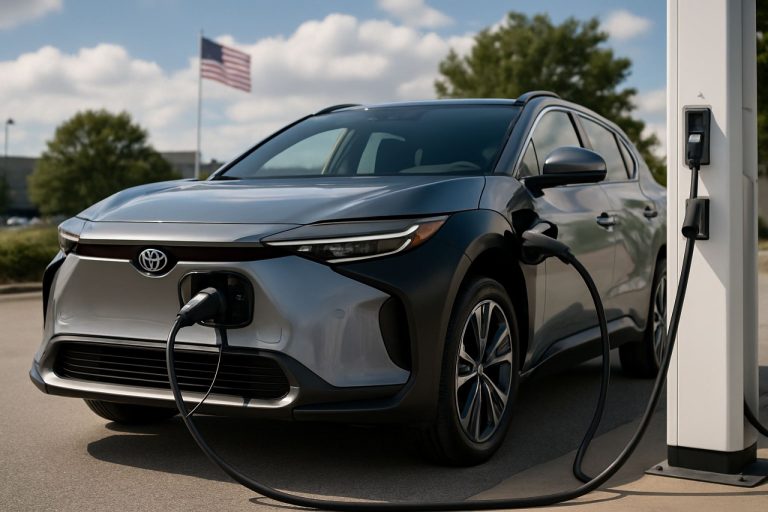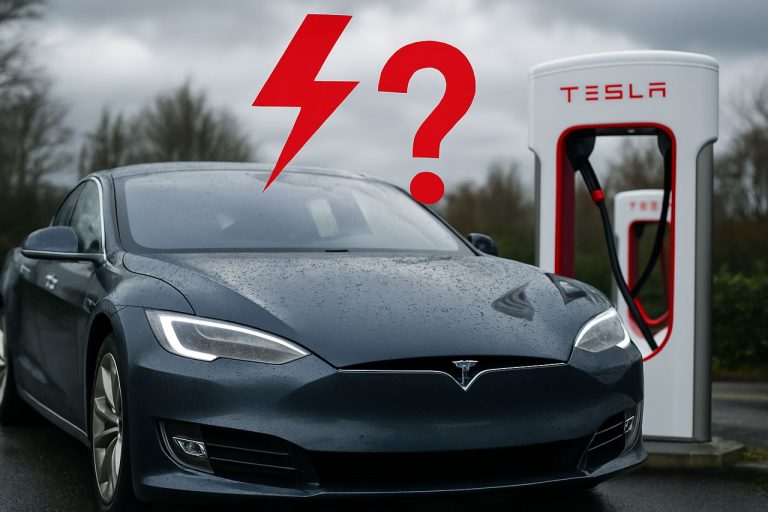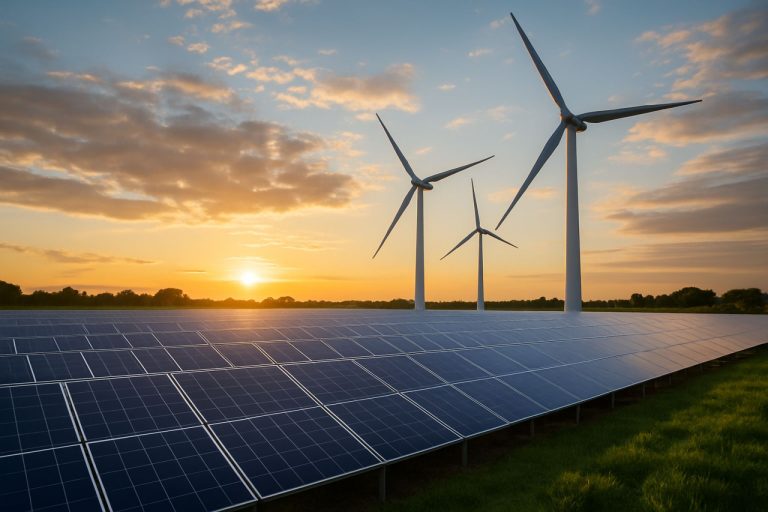
Municipal Renewable Energy Procurement in 2025: How Cities Are Powering the Next Wave of Clean Energy. Explore the Market Forces, Technology Shifts, and Strategic Moves Shaping the Future of Urban Sustainability.
- Executive Summary: Key Trends and Market Drivers in 2025
- Market Size and Growth Forecast (2025–2030): Quantifying the Surge
- Policy and Regulatory Landscape: Federal, State, and Local Impacts
- Procurement Models: PPAs, Aggregation, and Direct Investment
- Technology Innovations: Solar, Wind, Storage, and Emerging Solutions
- Leading Municipal Initiatives: Case Studies and Best Practices
- Key Players and Industry Partnerships: Utilities, Developers, and Tech Providers
- Challenges and Barriers: Financing, Grid Integration, and Equity
- Sustainability and Decarbonization Outcomes: Measuring Impact
- Future Outlook: Strategic Recommendations and Market Opportunities
- Sources & References
Executive Summary: Key Trends and Market Drivers in 2025
Municipal renewable energy procurement is poised for significant growth in 2025, driven by ambitious climate targets, evolving regulatory frameworks, and the increasing economic competitiveness of clean energy technologies. Cities across North America, Europe, and parts of Asia are intensifying their efforts to decarbonize municipal operations and local grids, leveraging a mix of direct power purchase agreements (PPAs), community solar programs, and innovative financing models.
A key trend in 2025 is the acceleration of municipal commitments to 100% renewable energy. In the United States, over 200 cities have pledged to transition to 100% clean electricity, with many aiming for completion by 2030 or sooner. This momentum is supported by organizations such as National Renewable Energy Laboratory and U.S. Department of Energy, which provide technical assistance and policy guidance. European municipalities are similarly active, with cities like Copenhagen and Amsterdam advancing large-scale wind and solar procurement through regional energy cooperatives and direct contracts with developers.
The economic case for municipal renewable procurement continues to strengthen. The levelized cost of electricity (LCOE) for utility-scale solar and wind has fallen below that of conventional fossil fuels in many regions, according to data from International Energy Agency. This cost advantage is enabling cities to lock in long-term, fixed-price contracts that hedge against energy market volatility. In 2025, more municipalities are expected to pursue virtual PPAs and aggregated procurement models, allowing smaller cities to pool demand and access favorable pricing from large-scale projects.
Technological innovation is also shaping procurement strategies. The integration of battery storage, demand response, and smart grid solutions is enabling cities to maximize renewable penetration while maintaining grid reliability. Companies such as Siemens and Enel are partnering with municipalities to deploy advanced energy management systems and distributed energy resources, supporting both decarbonization and resilience objectives.
Looking ahead, regulatory developments will play a pivotal role. In the U.S., the Inflation Reduction Act and state-level clean energy standards are expected to further incentivize municipal procurement. In Europe, the revised Renewable Energy Directive and national climate laws are mandating higher shares of renewables in public sector energy use. As a result, the outlook for municipal renewable energy procurement in 2025 and beyond is robust, with cities positioned as key drivers of the global energy transition.
Market Size and Growth Forecast (2025–2030): Quantifying the Surge
Municipal renewable energy procurement is poised for robust growth between 2025 and 2030, driven by ambitious climate targets, evolving regulatory frameworks, and the increasing economic competitiveness of renewables. As cities worldwide commit to decarbonization, the volume and value of municipal power purchase agreements (PPAs) and direct investments in renewable projects are expected to surge.
In 2025, municipal governments in North America and Europe are projected to collectively procure over 20 GW of new renewable capacity, primarily through long-term PPAs and community solar initiatives. This figure is anticipated to grow at a compound annual growth rate (CAGR) of 12–15% through 2030, with global municipal procurement potentially exceeding 40 GW annually by the end of the decade. The United States remains a leader, with cities such as Los Angeles, New York, and Chicago leveraging their scale to secure large-scale wind and solar contracts. For example, the Los Angeles Department of Water and Power (LADWP) has committed to 100% renewable energy by 2035, driving significant procurement volumes in the near term.
Europe is witnessing similar momentum, with cities in Germany, the Netherlands, and the Nordics accelerating renewable procurement to meet EU climate mandates. Municipal utilities, such as Stadtwerke München in Munich, are expanding their renewable portfolios, targeting full decarbonization of electricity supply by 2035. In the UK, local authorities are increasingly entering into direct PPAs with wind and solar developers, supported by frameworks from organizations like the Local Government Association.
Asia-Pacific municipalities, particularly in Japan and Australia, are also scaling up renewable procurement. Japanese cities are leveraging the country’s feed-in tariff reforms, while Australian councils are aggregating demand to negotiate favorable terms with suppliers such as Origin Energy and AGL Energy.
Key drivers of this surge include declining costs of solar PV and wind, improved storage solutions, and the availability of innovative procurement models such as virtual PPAs and green tariffs. Major renewable developers, including Enel and ENGIE, are increasingly tailoring offerings to municipal clients, providing bundled solutions that include energy, storage, and grid services.
Looking ahead, the municipal renewable energy procurement market is expected to become more competitive and diversified, with new entrants, digital platforms for aggregation, and a growing emphasis on local economic benefits. This positions municipalities as pivotal actors in the global energy transition through 2030 and beyond.
Policy and Regulatory Landscape: Federal, State, and Local Impacts
Municipal renewable energy procurement in the United States is shaped by a dynamic policy and regulatory landscape at the federal, state, and local levels. As of 2025, several key federal initiatives continue to influence municipal strategies. The Inflation Reduction Act (IRA), enacted in 2022, remains a cornerstone, offering expanded tax credits and direct pay options for public entities, including municipalities, to invest in renewable energy projects. These incentives are expected to drive increased municipal participation in solar, wind, and storage procurement through at least 2032, with the Internal Revenue Service providing ongoing guidance for implementation (Internal Revenue Service).
At the state level, renewable portfolio standards (RPS) and clean energy targets are critical drivers. As of early 2025, over 30 states and the District of Columbia have binding RPS or clean energy standards, many of which require utilities to source a significant portion of electricity from renewables. States such as California, New York, and Massachusetts have set ambitious targets—California, for example, mandates 100% clean electricity by 2045, directly impacting municipal procurement strategies (California Energy Commission). These policies often include carve-outs or incentives for municipal and community-scale projects, further encouraging local governments to pursue renewable energy contracts.
Local governments are also leveraging their regulatory authority to accelerate renewable procurement. Many cities have adopted their own clean energy goals, often more aggressive than state mandates. For instance, cities like Los Angeles and Boston have committed to 100% renewable electricity for municipal operations within the next decade. These commitments are supported by local ordinances, streamlined permitting processes, and innovative procurement mechanisms such as power purchase agreements (PPAs) and community choice aggregation (CCA) programs. CCAs, in particular, allow municipalities to aggregate demand and procure renewable energy on behalf of residents and businesses, a model that has expanded rapidly in states like California and Illinois (California Public Utilities Commission).
Looking ahead, the regulatory outlook for municipal renewable procurement remains favorable. Federal support through the IRA and potential new climate legislation could further reduce costs and barriers. States are expected to continue tightening clean energy mandates, while local governments are likely to expand direct procurement and aggregation efforts. However, challenges persist, including interconnection delays, transmission constraints, and evolving market rules at regional transmission organizations. Municipalities will need to navigate this complex landscape, but the policy environment in 2025 and beyond is broadly supportive of accelerated renewable energy adoption at the local level.
Procurement Models: PPAs, Aggregation, and Direct Investment
Municipal renewable energy procurement is rapidly evolving, with cities and local governments increasingly leveraging innovative procurement models to meet ambitious sustainability targets. As of 2025, three primary models dominate the landscape: Power Purchase Agreements (PPAs), aggregation strategies, and direct investment in renewable assets. Each approach offers distinct advantages and challenges, shaping the way municipalities source clean energy.
Power Purchase Agreements (PPAs) remain the most widely adopted model for municipal renewable energy procurement. Through PPAs, municipalities enter into long-term contracts with renewable energy developers, securing a fixed price for electricity generated from sources such as wind or solar. This model provides price certainty and supports the development of new renewable projects. In the United States, cities like Los Angeles and Houston have signed large-scale PPAs, enabling them to claim significant portions of their electricity from renewable sources. Major developers such as NextEra Energy and ENGIE are frequently involved in municipal PPAs, offering both offsite and onsite solutions tailored to public sector needs.
Aggregation is gaining traction as a means for smaller municipalities to pool their demand and negotiate collectively for renewable energy. Community Choice Aggregation (CCA) programs, particularly prevalent in states like California, allow local governments to aggregate the electricity load of their residents and businesses, thereby increasing purchasing power and enabling access to more favorable contract terms. Organizations such as California Community Choice Association represent these efforts, which are expected to expand in the coming years as more states adopt enabling legislation. Aggregation not only democratizes access to renewables but also fosters regional collaboration and innovation in procurement strategies.
Direct investment in renewable energy assets is an emerging trend among larger municipalities with greater financial resources and technical expertise. By owning solar farms, wind turbines, or battery storage systems outright, cities can exert greater control over their energy supply and capture long-term economic benefits. For example, Los Angeles Department of Water and Power has invested directly in utility-scale solar and wind projects, integrating these assets into its municipal grid. This approach, while capital-intensive, aligns with the growing emphasis on energy sovereignty and resilience in the face of climate and market uncertainties.
Looking ahead, the outlook for municipal renewable energy procurement is robust. The proliferation of flexible procurement models, combined with declining technology costs and supportive policy frameworks, is expected to accelerate municipal adoption of renewables through 2025 and beyond. As cities continue to innovate and collaborate, these procurement models will play a pivotal role in achieving local and national decarbonization goals.
Technology Innovations: Solar, Wind, Storage, and Emerging Solutions
Municipal renewable energy procurement is undergoing rapid transformation in 2025, driven by technological innovations in solar, wind, energy storage, and emerging solutions. Cities and local governments are increasingly leveraging these advancements to meet ambitious decarbonization targets, reduce energy costs, and enhance grid resilience.
In solar energy, the adoption of high-efficiency photovoltaic (PV) modules, such as those utilizing TOPCon and heterojunction cell technologies, is accelerating. Leading manufacturers like JinkoSolar and Trina Solar are supplying municipalities with panels that exceed 22% efficiency, enabling more power generation per square meter and making urban solar installations more viable. Bifacial modules, which capture sunlight on both sides, are also being deployed in municipal projects to maximize output, especially in constrained spaces.
Wind energy procurement by municipalities is benefiting from the deployment of larger, more efficient turbines. Companies such as Vestas and Siemens Gamesa Renewable Energy are delivering onshore and offshore turbines with capacities exceeding 6 MW, allowing cities to secure long-term power purchase agreements (PPAs) for substantial portions of their electricity needs. The modularity and scalability of modern wind farms are making them attractive for regional energy cooperatives and city-owned utilities.
Energy storage is a critical enabler for municipal renewable procurement, addressing the intermittency of solar and wind. Lithium-ion battery systems remain dominant, with suppliers like LG Energy Solution and Tesla providing grid-scale solutions that support load shifting and backup power. In 2025, there is also growing interest in long-duration storage technologies, such as flow batteries and thermal storage, which are being piloted in several municipal projects to extend renewable integration beyond daily cycles.
Emerging solutions are further expanding the toolkit for cities. Virtual power plants (VPPs), which aggregate distributed energy resources, are being implemented to optimize municipal energy portfolios and participate in grid services markets. Companies like Schneider Electric are partnering with cities to deploy advanced energy management platforms that integrate renewables, storage, and demand response. Additionally, green hydrogen is gaining traction as a seasonal storage medium and a pathway for decarbonizing municipal fleets and heating systems, with pilot projects underway in collaboration with technology providers such as Nel Hydrogen.
Looking ahead, the convergence of these innovations is expected to accelerate municipal renewable energy procurement, enabling cities to achieve higher shares of clean energy, improve energy security, and support broader climate goals through 2025 and beyond.
Leading Municipal Initiatives: Case Studies and Best Practices
Municipal renewable energy procurement has accelerated in 2025, with cities across North America and Europe leading ambitious initiatives to decarbonize their energy supply. Municipalities are leveraging their purchasing power to secure long-term renewable energy contracts, often through power purchase agreements (PPAs), community solar programs, and direct investment in local generation assets. These efforts are not only reducing greenhouse gas emissions but also providing cost stability and fostering local economic development.
One of the most prominent examples is the City of Los Angeles, which has continued to expand its renewable portfolio through the Los Angeles Department of Water and Power (LADWP). In 2024, LADWP finalized a major PPA for solar and battery storage, supporting the city’s goal of reaching 100% renewable energy by 2035. The project, developed in partnership with NextEra Energy, is among the largest municipal solar-plus-storage initiatives in the United States, providing over 400 MW of clean power and 1,200 MWh of storage capacity. This procurement model is being closely watched by other large cities seeking to replicate its scale and cost-effectiveness.
In the Midwest, the City of Chicago has advanced its “Chicago Renewable Energy Challenge,” committing to power all municipal buildings with 100% renewable energy by 2025. The city has entered into agreements with regional wind and solar developers, including Invenergy, a leading independent renewable energy company headquartered in Chicago. These contracts are structured to provide both environmental benefits and long-term price certainty, insulating the city from fossil fuel price volatility.
Internationally, the City of Copenhagen continues to set benchmarks for municipal procurement. Through its municipal utility, HOFOR, Copenhagen has invested in large-scale wind and district heating projects, aiming for carbon neutrality by 2025. HOFOR’s approach integrates local citizen engagement and public-private partnerships, ensuring broad support and efficient project delivery.
Best practices emerging from these case studies include aggregating municipal demand to achieve economies of scale, prioritizing local and regional renewable projects to maximize community benefits, and integrating storage solutions to enhance grid reliability. Municipalities are also increasingly collaborating through networks such as the C40 Cities Climate Leadership Group, sharing procurement strategies and technical expertise.
Looking ahead, the outlook for municipal renewable energy procurement remains robust. As technology costs continue to decline and policy frameworks evolve, more cities are expected to adopt innovative procurement models, further accelerating the transition to clean energy at the local level.
Key Players and Industry Partnerships: Utilities, Developers, and Tech Providers
Municipal renewable energy procurement in 2025 is characterized by dynamic collaborations among utilities, project developers, and technology providers. These partnerships are central to enabling cities to meet ambitious decarbonization targets, often through power purchase agreements (PPAs), community solar programs, and direct investment in renewable infrastructure.
Among utilities, NextEra Energy stands out as a leading supplier of renewable energy to municipalities across the United States. The company, through its subsidiary Florida Power & Light, has expanded its solar portfolio and offers tailored procurement solutions for local governments. Similarly, Duke Energy has developed municipal-focused renewable programs, including green tariffs and virtual PPAs, enabling cities to claim renewable energy credits and reduce their carbon footprints.
On the developer side, Invenergy is a major independent power producer with a strong track record of partnering with municipalities for wind and solar projects. The company’s flexible project structures and experience with public sector procurement processes have made it a preferred partner for cities seeking to accelerate renewable adoption. EDP Renewables, with a global presence and significant U.S. operations, is also active in municipal procurement, offering both utility-scale and distributed generation solutions.
Technology providers play a crucial role in enabling and optimizing municipal renewable energy procurement. Siemens delivers grid integration technologies and digital platforms that help cities manage renewable assets and ensure grid reliability. Schneider Electric offers energy management software and advisory services, supporting municipalities in structuring PPAs and tracking sustainability metrics. Tesla is increasingly involved through its battery storage solutions, which are being paired with municipal solar projects to enhance reliability and maximize renewable utilization.
Industry partnerships are also expanding through joint ventures and public-private initiatives. For example, utilities are collaborating with technology firms to deploy advanced metering and demand response systems, while developers are working with local governments to streamline permitting and community engagement. These alliances are expected to deepen as municipalities pursue 100% renewable energy goals and as federal and state incentives continue to support clean energy procurement.
Looking ahead, the outlook for municipal renewable energy procurement is robust. The sector is poised for further growth as more cities commit to net-zero targets and as key players—utilities, developers, and tech providers—continue to innovate and collaborate to deliver scalable, cost-effective solutions.
Challenges and Barriers: Financing, Grid Integration, and Equity
Municipal renewable energy procurement is accelerating in 2025, but cities face persistent challenges in financing, grid integration, and ensuring equitable outcomes. As municipalities strive to meet ambitious climate targets, these barriers shape the pace and effectiveness of their transition to clean energy.
Financing remains a primary obstacle. While the cost of renewables like solar and wind continues to decline, upfront capital requirements for large-scale projects or long-term power purchase agreements (PPAs) can strain municipal budgets. Many cities lack the credit ratings or borrowing capacity of larger utilities, limiting their access to favorable financing terms. Innovative models, such as green bonds and public-private partnerships, are gaining traction, but their adoption is uneven. For example, NextEra Energy, a major renewable developer, has partnered with several U.S. cities to structure PPAs that reduce upfront costs, but such arrangements often require complex negotiations and long-term commitments that not all municipalities can manage.
Grid integration is another significant challenge. As cities procure more renewable energy, the variability of wind and solar generation can strain local grids, especially where infrastructure is outdated or not designed for distributed resources. Municipalities must coordinate with regional transmission organizations and utilities to ensure reliable delivery and avoid curtailment. Companies like Siemens and Schneider Electric are working with cities to deploy smart grid technologies and energy management systems, but widespread upgrades require substantial investment and regulatory alignment. In 2025, grid congestion and interconnection delays remain common, particularly in fast-growing urban areas.
Equity considerations are increasingly central to municipal procurement strategies. There is growing recognition that the benefits of renewable energy—such as lower utility bills, cleaner air, and job creation—must be shared across all communities, including historically marginalized neighborhoods. However, ensuring equitable access to new projects and programs is complex. Municipalities are partnering with organizations like U.S. Department of Energy to design inclusive procurement processes and workforce development initiatives, but disparities persist. For example, rooftop solar adoption and community solar participation rates are often lower in low-income areas due to barriers like credit requirements and lack of homeownership.
Looking ahead, overcoming these challenges will require sustained collaboration among cities, technology providers, utilities, and community organizations. Policy support at the state and federal levels, combined with innovative financing and inclusive planning, will be critical to unlocking the full potential of municipal renewable energy procurement in the coming years.
Sustainability and Decarbonization Outcomes: Measuring Impact
Municipal renewable energy procurement is increasingly recognized as a critical lever for advancing sustainability and decarbonization outcomes in cities worldwide. As of 2025, municipalities are not only setting ambitious renewable energy targets but are also implementing robust mechanisms to measure and verify the environmental impact of their procurement strategies. This shift is driven by both regulatory requirements and a growing public demand for transparency and accountability in climate action.
A key trend in 2025 is the adoption of Power Purchase Agreements (PPAs) and virtual PPAs by cities to secure renewable electricity directly from project developers. For example, major U.S. cities such as Los Angeles and Houston have entered into long-term agreements with leading renewable energy providers like NextEra Energy and EDF Renewables, enabling them to claim direct emissions reductions and track progress toward their decarbonization goals. These agreements often include detailed reporting requirements, allowing municipalities to quantify avoided greenhouse gas (GHG) emissions using standardized protocols such as the Greenhouse Gas Protocol for Scope 2 emissions.
In Europe, cities are leveraging frameworks provided by organizations like CDP and Covenant of Mayors to report and benchmark their renewable energy procurement and associated emissions reductions. These platforms facilitate the aggregation of data across municipalities, enabling comparative analysis and the identification of best practices. For instance, the city of Copenhagen has committed to becoming carbon neutral by 2025, with a significant portion of its electricity sourced from wind projects developed in partnership with Ørsted, a global leader in offshore wind.
Measurement of impact is increasingly sophisticated, with cities employing advanced energy management systems and digital platforms to monitor real-time renewable energy consumption and GHG reductions. Companies such as Schneider Electric and Siemens provide integrated solutions that help municipalities track renewable energy procurement, optimize usage, and generate auditable sustainability reports.
Looking ahead, the outlook for municipal renewable energy procurement is robust. The proliferation of community solar programs, the expansion of green tariff options by utilities, and the integration of energy storage are expected to further enhance the decarbonization impact of municipal actions. As more cities commit to science-based targets and net-zero pathways, the emphasis on transparent, data-driven measurement of sustainability outcomes will only intensify, reinforcing the role of municipal procurement as a cornerstone of urban climate strategy.
Future Outlook: Strategic Recommendations and Market Opportunities
Municipal renewable energy procurement is poised for significant growth in 2025 and the following years, driven by ambitious decarbonization targets, evolving regulatory frameworks, and expanding market mechanisms. Cities and local governments are increasingly leveraging their purchasing power to accelerate the transition to clean energy, with a focus on both environmental impact and long-term cost savings.
A key trend is the adoption of power purchase agreements (PPAs) and virtual power purchase agreements (VPPAs) by municipalities. These instruments allow cities to directly procure renewable electricity from new or existing projects, often at fixed rates that hedge against future energy price volatility. For example, major utilities and renewable developers such as NextEra Energy and ENGIE are increasingly partnering with municipalities to structure long-term renewable energy deals. These collaborations are expected to expand as more cities commit to 100% renewable energy goals.
In 2025, the market is also witnessing a surge in community solar and distributed energy resource (DER) programs. Municipalities are working with providers like EDF Renewables and Enel to deploy solar arrays, battery storage, and microgrids that enhance local resilience and democratize access to clean power. These projects are often supported by state and federal incentives, as well as innovative financing models such as green bonds and energy-as-a-service contracts.
Strategically, municipalities should prioritize the following actions to maximize opportunities in renewable energy procurement:
- Aggregate Demand: Form regional buying groups or coalitions to increase purchasing power and negotiate better terms with suppliers. Organizations like Ameresco are facilitating such aggregation models.
- Leverage Data and Digital Tools: Utilize advanced energy management platforms to track consumption, forecast needs, and optimize procurement strategies. Companies such as Schneider Electric offer digital solutions tailored for municipal clients.
- Integrate Storage and Flexibility: Combine renewable procurement with battery storage and demand response to enhance grid reliability and capture additional value streams.
- Engage Stakeholders: Foster partnerships with local businesses, utilities, and community organizations to ensure broad support and equitable access to renewable energy benefits.
Looking ahead, the municipal renewable energy procurement market is expected to benefit from declining technology costs, improved regulatory clarity, and growing public support. As more cities set net-zero targets and climate action plans, the demand for innovative procurement models and partnerships with leading developers like NextEra Energy, ENGIE, and Enel will continue to rise, shaping a more sustainable urban energy landscape through 2025 and beyond.
Sources & References
- National Renewable Energy Laboratory
- International Energy Agency
- Siemens
- Enel
- Los Angeles Department of Water and Power
- Internal Revenue Service
- California Energy Commission
- California Public Utilities Commission
- NextEra Energy
- California Community Choice Association
- JinkoSolar
- Trina Solar
- Vestas
- Siemens Gamesa Renewable Energy
- Nel Hydrogen
- NextEra Energy
- Invenergy
- HOFOR
- C40 Cities Climate Leadership Group
- Florida Power & Light
- EDP Renewables
- EDF Renewables
- CDP
- Covenant of Mayors



